Ultrasound
Did you know we perform ultrasound examinations at Hornby Vets? But what is it?

Ultrasound consists of very high-pitched sound waves. The sound comes from a probe that is put against your pet’s skin. The sound waves travel into the body and are reflected by organs such as the liver and heart. Different types of tissue reflect different amounts of sound, and the ‘echoes’ that return to the probe are used to build up a picture of what is happening inside different organs.
Most animals are very tolerant of the ultrasound examination. However in some cases, sedation may be used, as examinations can take some time and to get the most information from them, a cooperative, still patient is needed. In some cases it is necessary for the stomach to be empty, as food prevents a clear picture of the stomach and surrounding area being obtained, so you may be asked not to feed your pet on the morning of the examination; drinking water is fine. Or we may require a full bladder to get the best pictures of the bladder wall and contents – for this reason, have water available and remove access to litter trays or outside for a couple of hours before coming to the surgery.
To get a good picture with ultrasound, the contact between the skin and the probe needs to be very good. For this reason, some hair will be clipped from your pet; the size and area of the clipped patch depends on which organs we need to examine. Talk to us if you have any concerns over your pet being clipped. Ultrasound gel will also be used to get a good contact, this is not irritant or toxic. Your pet will be held quietly for the examination, usually on their side or back, examinations take between 10 and 45 minutes depending on which organs are being examined.
The most common areas looked at with ultrasound are the heart and abdominal organs. Unlike an X-ray, which only shows the external shape of an organ, ultrasound allows us to look ‘inside’ organs. This is because tissues such as muscle and blood appear different with ultrasound, but look the same shade of grey on an X-ray. With ultrasound examination of the heart, the size of the four different chambers and the thickness of the walls can be measured, and the movement of the heart can be assessed. In the abdomen, the structure of the tissue within solid organs such as the liver, spleen and kidneys can be examined and the walls and contents of the stomach, intestines and bladder can be seen.
As in humans, ultrasound is a very reliable way of detecting pregnancy. Pregnancies may be reliably confirmed from 20 days in cats and dogs, although foetuses may be seen up to a week earlier than this.
Other structures that may be examined with ultrasound include eyes, tendons and superficial ‘lumps and bumps’.
In some cases ultrasound will give a definite answer as to what is going on, for example what is causing a heart murmur, or whether bladder stones or kidney cysts are present. In other cases ultrasound is only a part of the diagnostic process, with further information coming from other procedures such as blood tests, radiographs or biopsies; reasons for this are varied. Ultrasound examination is not always specific –many disease processes look very similar on ultrasound and there may need to be further tests done. Ultrasound is often useful to exclude certain conditions such as polycystic kidney disease or cancer. Ultrasound may also be useful in directing a non-invasive biopsy of a diseased organ for pathology testing in order for a definitive diagnosis to be made.
© Copyright 2025 LifeLearn Inc. Used and/or modified with permission under license. This content written by LifeLearn Animal Health (LifeLearn Inc.) is licensed to this practice for the personal use of our clients. Any copying, printing or further distribution is prohibited without the express written consent of LifeLearn. This content does not contain all available information for any referenced medications and has not been reviewed by the FDA Center for Veterinary Medicine, or Health Canada Veterinary Drugs Directorate. This content may help answer commonly asked questions, but is not a substitute for medical advice, or a proper consultation and/or clinical examination of your pet by a veterinarian. Please contact your veterinarian if you have any questions or concerns about your pet’s health. Last updated on Oct 13, 2020.

